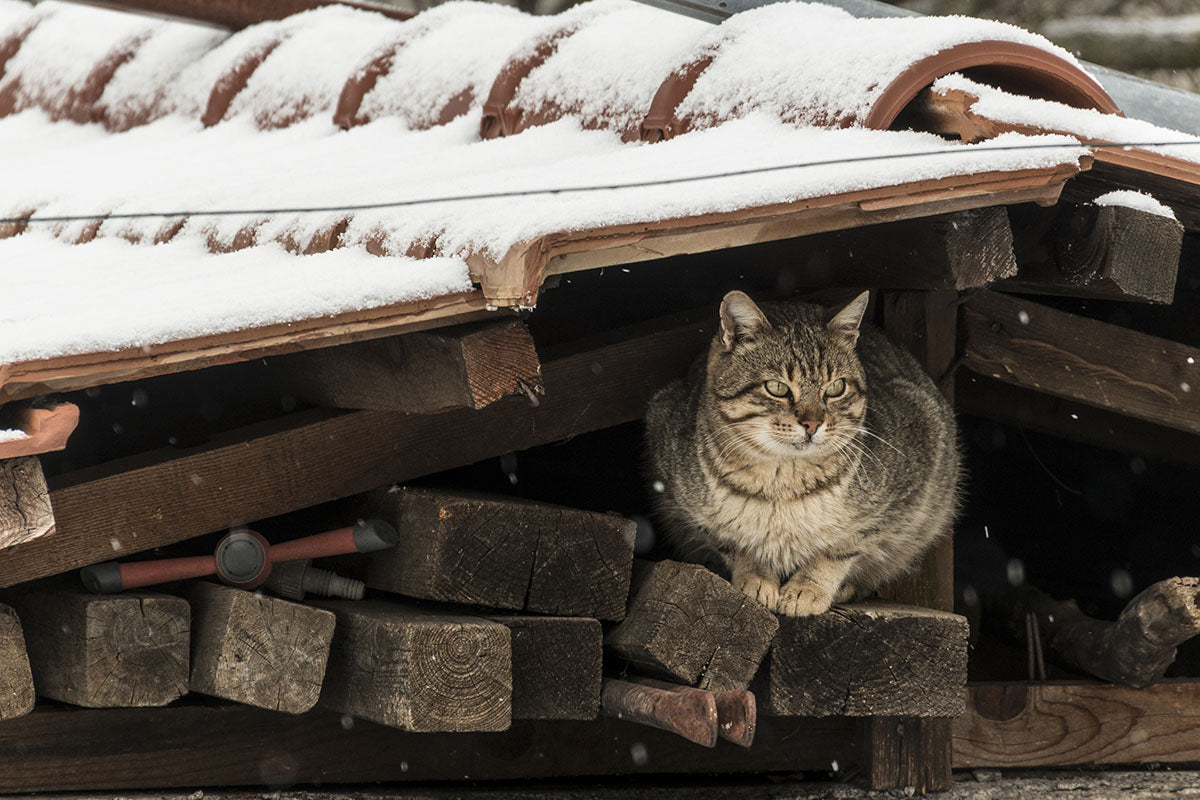
Creating a Safe Backyard Habitat for Stray Cats and Wildlife
If you have ever spotted a stray cat and wondered how you could help, or you have a bird feeder that ends up feeding half the neighborhood squirrels as well, you aren't alone. Many of us care deeply about the well-being of animals in our communities — whether they’re lost pets or wild creatures trying to survive.

One of the most impactful things we can do is create safe, welcoming spaces for them, especially as the seasons shift and their needs change. From shelter during winter storms to fresh water in the summer heat, small efforts can make a big difference.
Let's explore why safe spaces are so essential, what you can do to help, and how to keep the seasonal challenges our furry neighbors face in mind.
Importance of Providing Safe Spaces for Strays
Whether you have a stray cat that lies in the sun in your yard, an indoor/outdoor kitty, or want to help other wild animals that show up in your neighborhood, outdoor animals face constant threats: traffic, extreme weather, hunger, and illness. Without a safe place to rest, stay warm, or find clean water, their chances at long-term survival drop. Wildlife increasingly rely on urban spaces for food and shelter as their natural habitats shrink.
The good news is, it’s easy to make a difference.
Create basic shelters
Use a storage bin with an outdoor heated cat bed inside, such as K&H Lectro-Soft Outdoor Heated Pet Bed, to keep them safe, warm, and cozy. Or even better, purchase a shelter like the K&H Thermo Outdoor Kitty House Extra-Wide. It's large enough for two cats and is constructed of waterproof fabric. The house comes in heated and unheated models, and the heated version includes a removable heated cat bed that keeps feral cats warm, even in sub-zero temperatures. It also features two exits, ensuring the cat(s) are never trapped if a predator tries to enter. The house is great for barn cats, or if you need to create a shelter in the garage or on the porch.
The K&H Lectro-Soft Outdoor Heated Pet Bed is also great to use in a sheltered area. With a soft, supportive foam base and washable fleece cover, the thermostatically controlled bed will automatically warm the surface to the animal’s body temperature to keep your pet (or other animal) comfy and cozy. Another option is the K&H Self-Warming Pet Pad, a non-electric bed made of a self-warming material that captures the animal’s body heat and radiates the warmth back to them.
Note: If you purchase an electrically heated item for your outdoor friend, be sure it has a safety listing such as MET or UL.
Leave out fresh water
Animals need access to fresh water when it's cold in the winter — not just when it’s hot and dry in the summer. The K&H Outdoor Kitty Dining Room works for any outdoor animal, protecting the food and water bowls from the elements. The dining room pairs perfectly with the K&H Thermo-Kitty Café food and water bowls, heated to prevent freezing during winter weather. The café features a 5.5-foot protection-wrapped, abrasion-resistant cord; the stainless steel bowls are easy to remove for cleaning; and the bowl casings safely seals the electronics inside.
Don’t forget about food
Provide nutrient-dense food in the winter, like dry kibble for cats or dogs, seeds for birds, nuts for squirrels, etc. In the summer, provide drinking water when the weather is really hot and/or dry.
Support local rescues
Rescues are often underfunded and understaffed, and are often looking for volunteers to help with all kinds of tasks. If you don't have time to volunteer, they'll almost always take donations of money or supplies. Check your local rescue's website for an up-to-date wish list.
Report injured or aggressive animals
Sometimes, it's best to call a professional to give an animal proper care if they seem injured or are acting aggressively — for your safety and theirs. When in doubt, contact a local rehab center or animal control for guidance.
Seasonal Considerations for Strays and Wildlife
Animals, just like people, experience the seasons in different ways, and for those without a consistent home or habitat, the risks can multiply fast. By tuning in to what each season brings, we can offer support that helps keep strays and wild animals safer, healthier, and more comfortable year-round. Whether it's braving the chill of winter or surviving the heat of summer, even small seasonal adjustments to how we help can make a big impact.
Here’s what to keep in mind as the weather shifts:
-
Winter: Hypothermia and frostbite are serious risks. Strays need insulated shelters and access to unfrozen water. Check under your car for animals seeking warmth before starting your car.
-
Summer: Heatstroke is a serious risk. Provide shade and plenty of clean water to help keep animals cool; avoid metal bowls that heat up.
-
Spring and fall: Be mindful of increased animal activity: mating seasons, baby animals, and migration can mean more wildlife out and about.
Create a Safe Habitat for Animals in Your Backyard
Safe spaces, seasonal support, and small acts of kindness might seem simple, but to a stray cat trying to stay warm or a bird searching for water during a drought, they mean everything. You don’t have to do it all to make a difference: Just start where you are. Set out a bowl of water. Share this post with a friend. Build one small shelter. These everyday choices add up and create a safer, kinder world for the animals that live around us.





